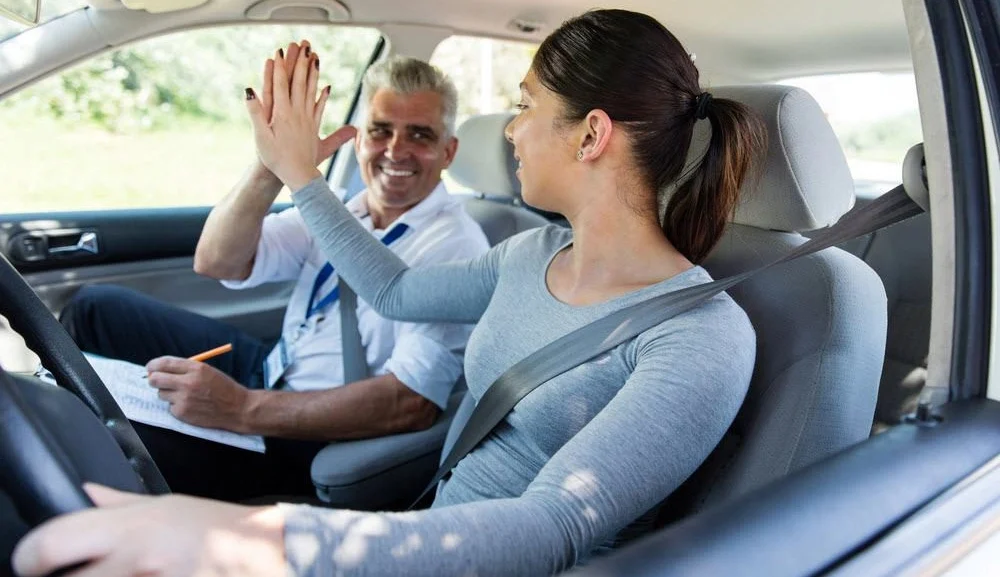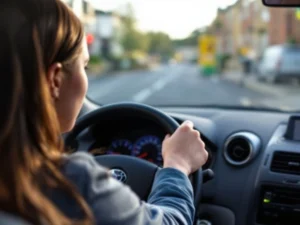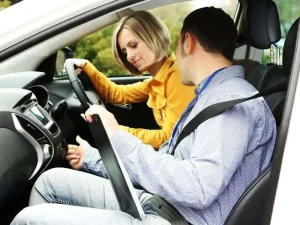Are you concerned about what to expect in your first driving lesson? Driving lessons can be an exciting milestone, but receiving your first driving lesson can also be an intimidating experience akin to stepping into the unknown.
Whether you’re a teen looking to take to the road or an adult who is finally getting around to getting your driver’s license, knowing what to expect can help soothe jitters and prepare you for success.
Get ready to learn everything you need to know about your first driving lesson. We will update you with a few pointers you need to help you feel confident behind the wheel.
What to Expect in Your First Driving Lesson
As you get set for your first driving lesson, prepare for a ride before you get behind the wheel. Most driving schools ask that you bring a valid learner’s permit. So, make sure you’ve passed your written test and have the right documentation in hand.
Also, dress in comfortable clothing and closed-toe shoes as you’ll be running around, and don’t gorge yourself on food or caffeine overload, lest you get jittery.
You should note that your instructor will probably start by asking you what your goals are and whether you’ve done any driving before, even if it’s just driving a go-kart or playing racing video games. In your response, be honest — this will help them customize the lesson according to your needs.
Most schools will use a dual-control car, so the instructor can keep you safe, and you can concentrate on learning rather than worrying about some worst-case scenario.
What Will Your First Lesson Look Like?
Your first driving lesson usually runs between 60 and 90 minutes and will likely involve a mixture of theory and practical skills. Here’s a breakdown of what to expect, step by step:
1. Overview and Vehicle Familiarization
Your instructor will introduce themselves and outline the structure of the lesson. Then you’ll become acquainted with the car. You’ll learn the basic operations of the car, like:
- How to adjust the seat and mirrors.
- How to adjust the steering wheel for comfort and visibility.
They’ll show you key controls like:
- Accelerator.
- Brake.
- Clutch (if manual).
- Turn signals.
- Windshield wipers.
This makes you confident before you even start the engine.
2. Checking List and Basic Controls
At this point, get ready to get into the basics. Your instructors will teach you how to start the car, use the gearshift, and operate the pedals (accelerator and brake) smoothly.
They’ll highlight safety checks, like making sure your seat belt is on and checking blind spots. You could also practice reaching up or down to the brake or accelerator while the car is stationary, so you can get a feel for how each pedal responds to pressure.
3. First Movements
Your first drive will probably take place in a quiet locale, such as an empty parking lot or a low-traffic street. You’ll begin with basic movements, like going straight, stopping gradually and turning the wheel.
Don’t panic if that sounds overwhelming — your instructor will walk you through everything, often with verbal cues such as “ease off the brake” or “turn left slowly.”
4. Learning to Steer and Manage Speed
Steering and managing your speed are fundamental skills you will start to develop. Your instructor will show you how to grip the wheel (usually at the 10-and-2 or 9-and-3 positions) and smooth turns.
You’ll practice keeping a steady speed and braking slowly so you don’t stop abruptly or jerkily. If you’re being taught manual, they might introduce the clutch, though this is usually done in a subsequent lesson.
5. Understanding Road Awareness
Your instructor will teach you how to Scan the area you’re driving in and keep an eye on the mirrors and the actions of other road users. They may ask you to identify road signs or explain basic rules, such as yielding or stopping at intersections.
6. Wrapping Up
Your instructors will evaluate your performance at the end, mentioning what is good, and what to work on. They’ll recommend practice areas for your next lesson and might assign “homework,” such as memorizing road signs or adjusting your mirrors in a parked car. You’ll also book your next session to help with steady progress.
How to Have a Successful First Driving Lesson
- Stay Calm and Communicate: It’s natural to be nervous, so take deep breaths and communicate with your instructor about accommodations. If it’s unclear, ask questions.
- Be an Active Listener: Your instructor is looking out for you. Be obedient and follow their guidance instead of being paranoid or hesitant about what you do.
- Don’t Expect Perfection: You are bound to mess up. Whether you stutter the car along and jerk the wheel too hard, it’s all forward movement.
- Off-road Practice: Check out some traffic rules and road signs before your lesson to help you feel confident.
- Find the Right Instructor: Work with a certified instructor who has good reviews and is patient. Looking forward, a good dynamic between the teacher and learner increases learning.
Common Issues and Solutions
New drivers struggle with things like getting pedals to work together, judging distances or feeling overwhelmed with the amount of things they have to do at once.
If you find pedal control difficult, practice “feeling” the brake and accelerator in a car that’s not moving. To help you develop spatial awareness in turns, your instructor may use cones or markers. With time, these tasks will become second nature, be patient.
READ ALSO:
- How Many Driving Lessons Do You Need?
- Top Tips to Pass Your Driving Test
- Manual vs Automatic Driving Lessons
- How Many Driving Lessons Do I Need in USA?
- How Long Does Driving School Take in the US?
What Happens After Your First Lesson
You’ll probably come out of your first lesson excited as well as relieved. You may not be able to handle the highways yet, but you’ll have the tools for a foundation.
Regular lessons — usually one or two lessons a week — together with supervised practice (if allowed in your area) will get you ahead in progress.
The first driving lesson is an opening to independence, a mixture of jitters and new-found expertise. You’ll build a solid foundation for driving safely and confidently by preparing mentally, paying attention to your instructor, and trying to enjoy the process of learning.
We hope you enjoy the lessons, and practice each one with your driving instructor or with friends until you feel confident. Ready to take the wheel? A decent driving school will get you on your road to freedom in no time!




